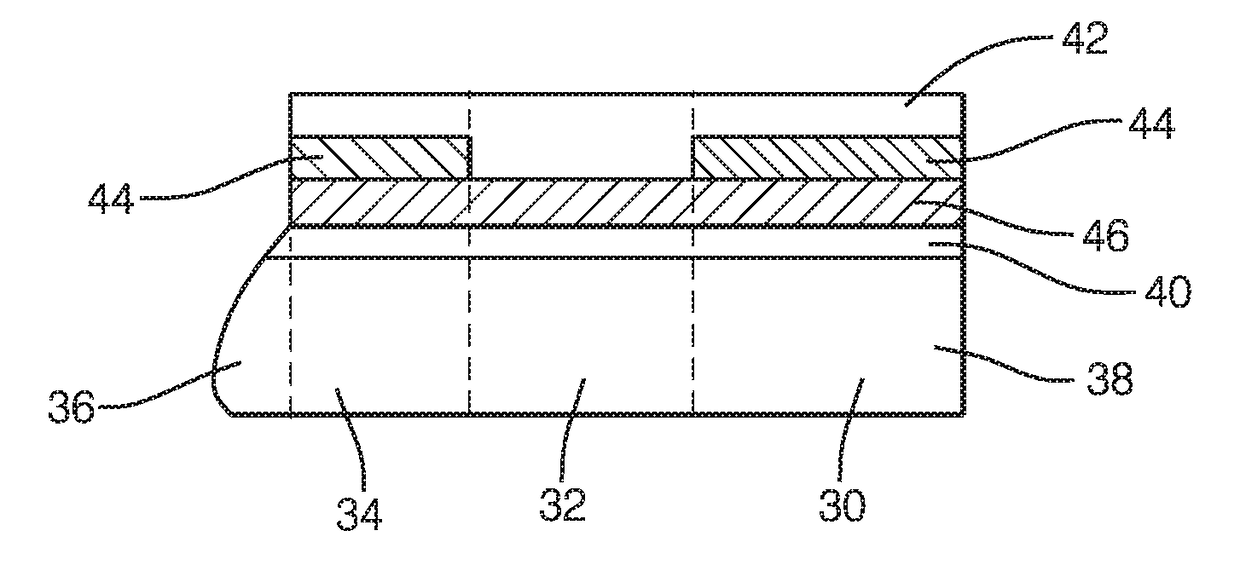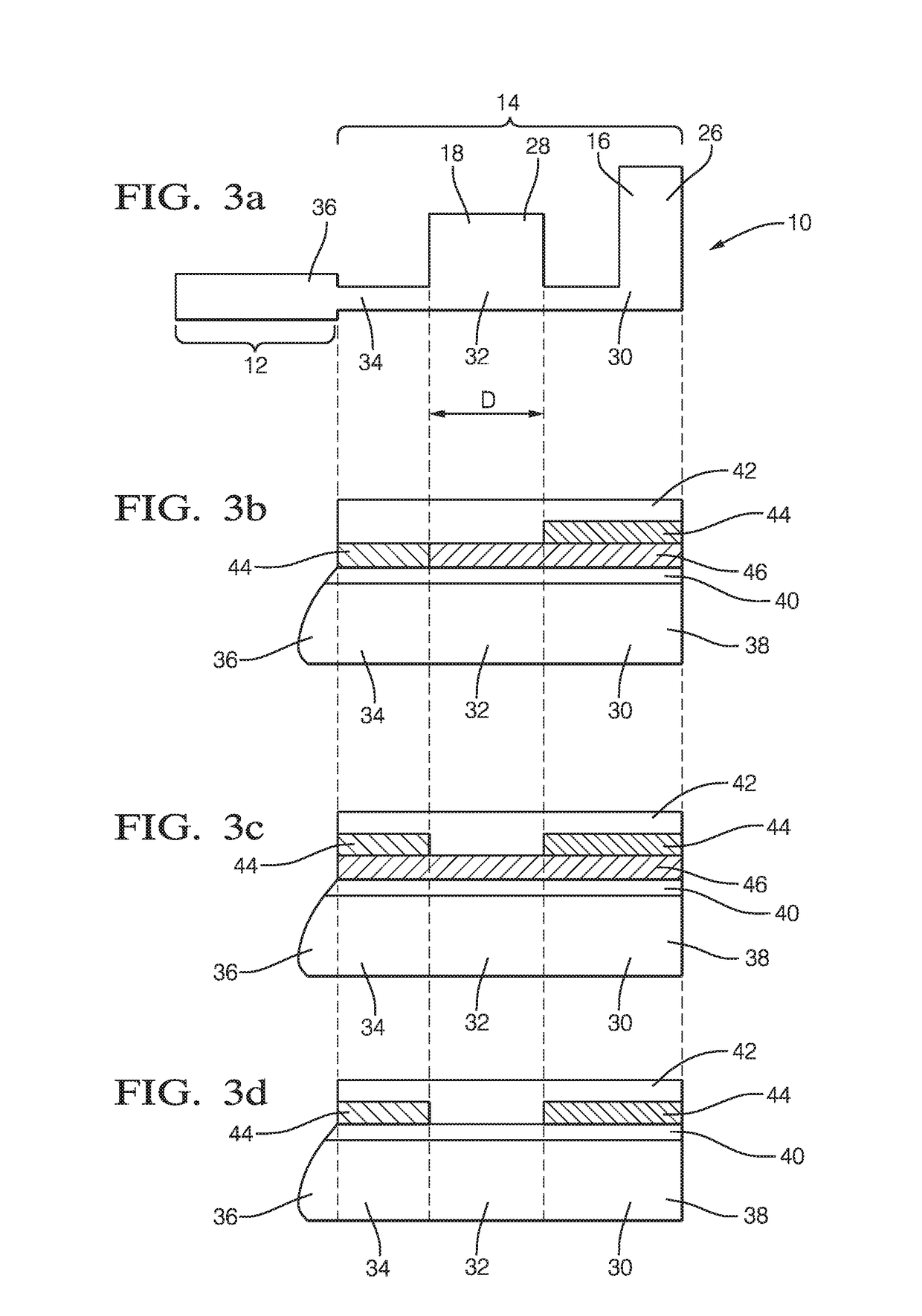Electrical contact element
a contact element and electric technology, applied in the direction of connection contact member material, coupling contact member, electrical apparatus, etc., can solve the problems of increased vehicle weight, lowered electrical conductivity, aluminum is prone to oxidation, etc., and achieves good electrical conductivity, low density, and corrosion protection.
- Summary
- Abstract
- Description
- Claims
- Application Information
AI Technical Summary
Benefits of technology
Problems solved by technology
Method used
Image
Examples
first embodiment
[0049] illustrated in FIG. 3b, the coating in the first region 30 contains a first layer 42, a second layer 44 and a third layer 46, wherein the first layer 42 forms an outer layer and the second layer 44 is arranged underneath the first layer 42. More specifically, the second layer 44 is provided between the first layer 42 and the third layer 46, wherein the third layer 46 is arranged on top of the layer 40 of hot dip tin.
[0050]In the second region 32, the coating contains the first layer 42 and the third layer 46. Again, the first layer 42 forms an outer layer and the third layer 46 is arranged on top of the layer 40 of hot dip tin. In contrast to the coating in the first region 30, the second layer 44 is absent in the coating in the second region 32.
[0051]In the third region 34, the coating contains the first layer 42 and the second layer 44, whereas the third layer 46 absent. In other words, the first layer 42 forms an outer layer and the second layer 44 is arranged between and ...
second embodiment
[0052]FIG. 3c shows a coating of the connection portion 14 according to a This coating differs from the coating shown in FIG. 3b in that a layer structure in the third region 34 corresponds to the layer structure in the first region 30, i.e. the third region 34 comprises not only the first and second layers 42, 44 but also the third layer 46 wherein the first layer 42 forms an outer layer and the second layer 44 is arranged between the first layer 42 and the third layer 46.
third embodiment
[0053]In FIG. 3d a coating of the connection portion 14 is depicted. This coating differs from the coating shown in FIG. 3c in that the third layer 46 is absent in the first, second and third regions 30, 32, 34.
[0054]In either case, the terminal portion 12 of the electrical contact element 10 does not comprise any coating of the sort described above, i.e. the layer 40 of hot dip tin forms an outer layer in the fourth region 36.
[0055]In all embodiments shown in FIGS. 3b to 3d, 4b and 5, the first layer 42 is made of matte tin. The second layer 44 is made of zinc. The third layer 46 is made of an alloy of copper and zinc, with the copper zinc alloy preferably containing zinc in an amount of 30% to 40% by weight.
[0056]As can be seen in FIGS. 3b to 3d, the first region 30 and the third region 34 comprise a coating containing the second layer 44, whereas the second layer 44 is absent in the second region 32. Compared to the standard electrode potentials of copper contained in the sheet ...
PUM
| Property | Measurement | Unit |
|---|---|---|
| distance | aaaaa | aaaaa |
| distance | aaaaa | aaaaa |
| distance | aaaaa | aaaaa |
Abstract
Description
Claims
Application Information
 Login to View More
Login to View More - R&D
- Intellectual Property
- Life Sciences
- Materials
- Tech Scout
- Unparalleled Data Quality
- Higher Quality Content
- 60% Fewer Hallucinations
Browse by: Latest US Patents, China's latest patents, Technical Efficacy Thesaurus, Application Domain, Technology Topic, Popular Technical Reports.
© 2025 PatSnap. All rights reserved.Legal|Privacy policy|Modern Slavery Act Transparency Statement|Sitemap|About US| Contact US: help@patsnap.com



